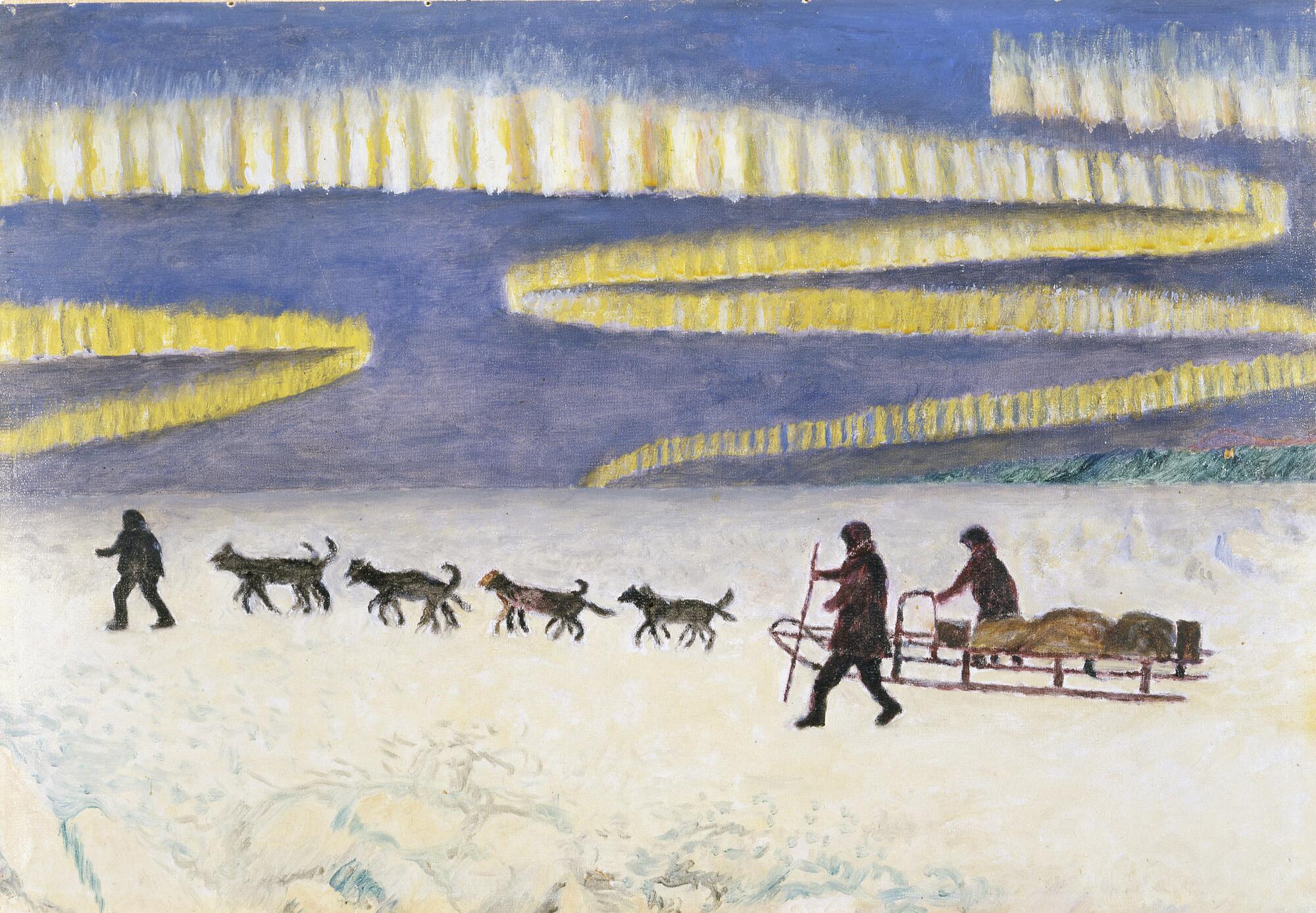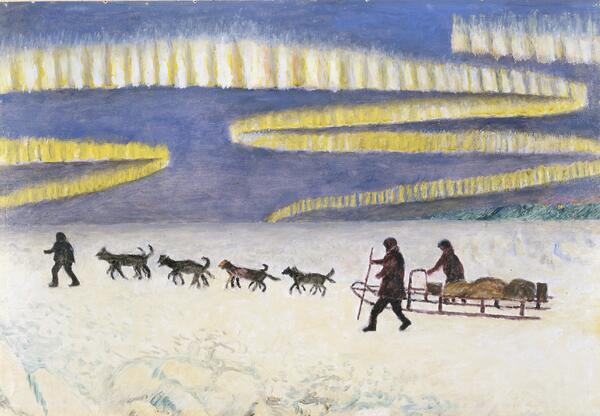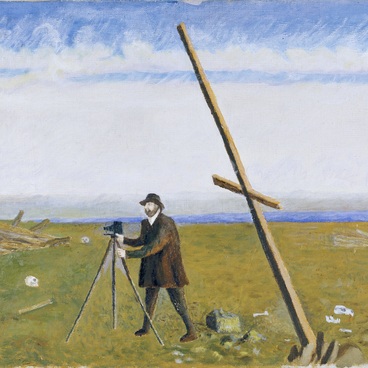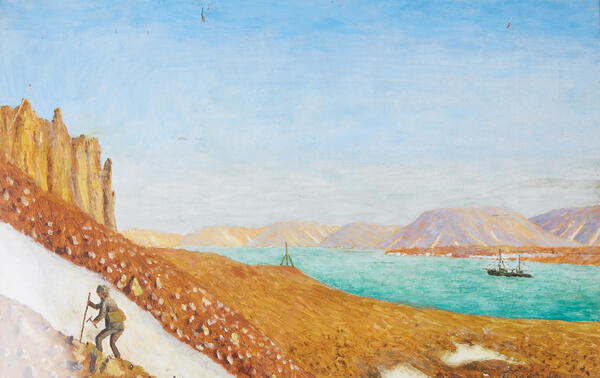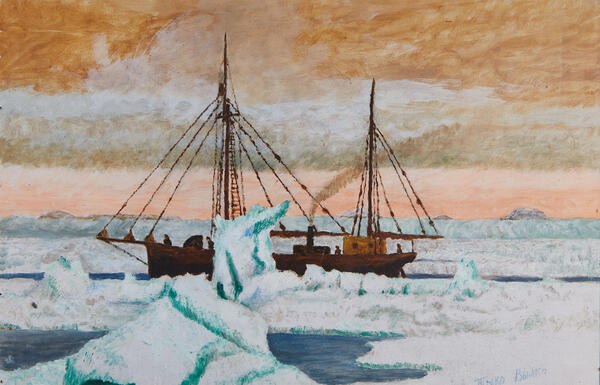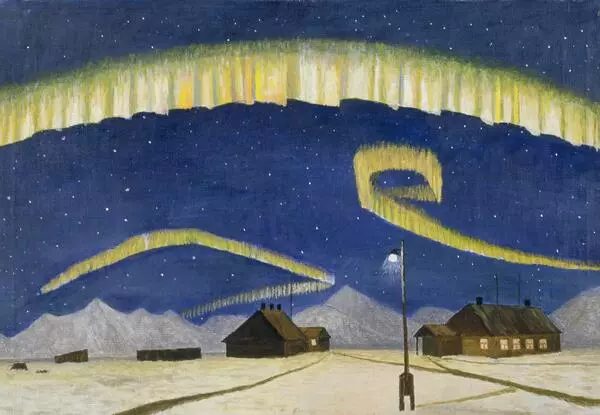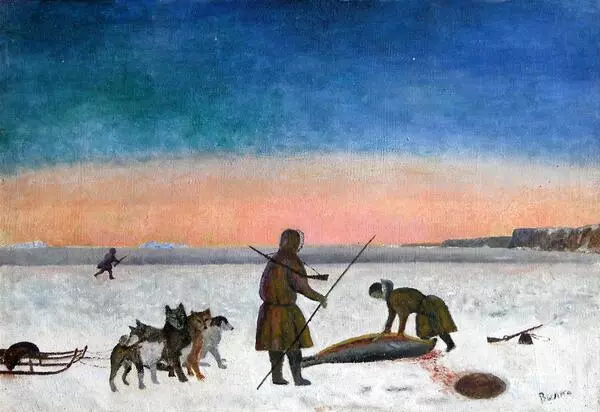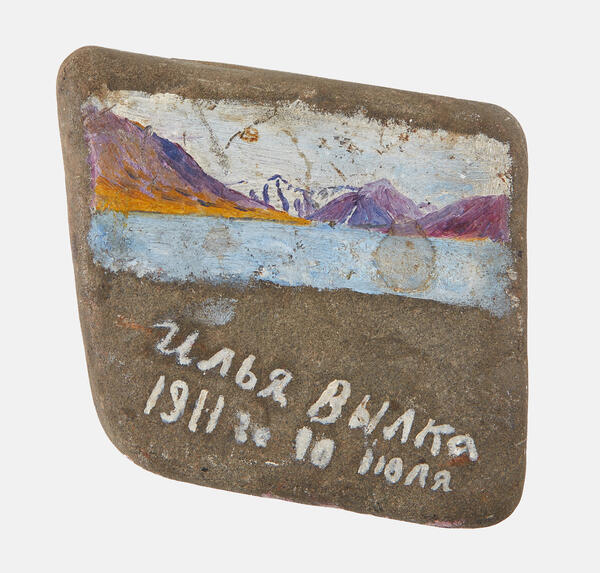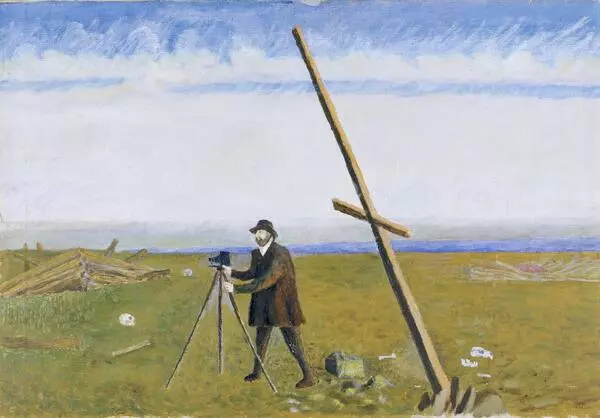In the 1910s, two Russian explorers, Georgy Sedov and Vladimir Rusanov, undertook separate Arctic expeditions. Neither of them ended well: Sedov died before achieving the North pole he had been so willing to reach, and very little is known about the fate of Rusanov and his crew, apart from some relics found later. In 1934, an evidence was found showing that Rusanov and his peers had died on their way. For Ilya Vylka, a Nenets artist, it was like saying good-buy to the deceased friend for the second time. Later, in memory of the hero explorers, he painted Sedov’s Last Journey.
The canvas may be the only dramatic painting by Vylka. Vylka had met Georgy Sedov in 1910 in the village Krestovaya Guba in Novaya Zemlya. Sedov asked Vylka to be his guide in the next expedition, but Rusanov made it clear that he himself was interested in the young Nenets' assistance.
Vylka wrote: ‘We were drinking tea and talking about expeditions. Sedov asked me to join him. But Rusanov kicked me slightly, and so I kept my mouth shut. When we left Sedov’s tent, Rusanov told me: ‘You shouldn’t go with him. We should always work together.’’
However, it was Sedov’s last expedition that Vylka painted. He couldn’t bear to think of his friend Rusanov as a dead man. Vylka painted Rusanov many times, but on his canvas the explorer always appeared alive and active. Already as an old man, knowing that he would die soon, Vylka once said: ‘I am going after Rusanov. And we will walk together across the ice, as we used to…’
Sedov’s Last Journey is an unusual picture: it shows the Rudolf Island, while the common motif of the artist was Novaya Zemlya, his native land. The Rudolf Island is the northernmost island of the Franz Josef Archipelago, where Sedov was buried. Vylka has never been there. The picture is almost monochrome: a white ice desert, dark silhouettes of men and dogs. Even the flashes of northern light are not festive nor joyous: their discreet colour echoes the gloom atmosphere of the whole picture.
The canvas may be the only dramatic painting by Vylka. Vylka had met Georgy Sedov in 1910 in the village Krestovaya Guba in Novaya Zemlya. Sedov asked Vylka to be his guide in the next expedition, but Rusanov made it clear that he himself was interested in the young Nenets' assistance.
Vylka wrote: ‘We were drinking tea and talking about expeditions. Sedov asked me to join him. But Rusanov kicked me slightly, and so I kept my mouth shut. When we left Sedov’s tent, Rusanov told me: ‘You shouldn’t go with him. We should always work together.’’
However, it was Sedov’s last expedition that Vylka painted. He couldn’t bear to think of his friend Rusanov as a dead man. Vylka painted Rusanov many times, but on his canvas the explorer always appeared alive and active. Already as an old man, knowing that he would die soon, Vylka once said: ‘I am going after Rusanov. And we will walk together across the ice, as we used to…’
Sedov’s Last Journey is an unusual picture: it shows the Rudolf Island, while the common motif of the artist was Novaya Zemlya, his native land. The Rudolf Island is the northernmost island of the Franz Josef Archipelago, where Sedov was buried. Vylka has never been there. The picture is almost monochrome: a white ice desert, dark silhouettes of men and dogs. Even the flashes of northern light are not festive nor joyous: their discreet colour echoes the gloom atmosphere of the whole picture.
